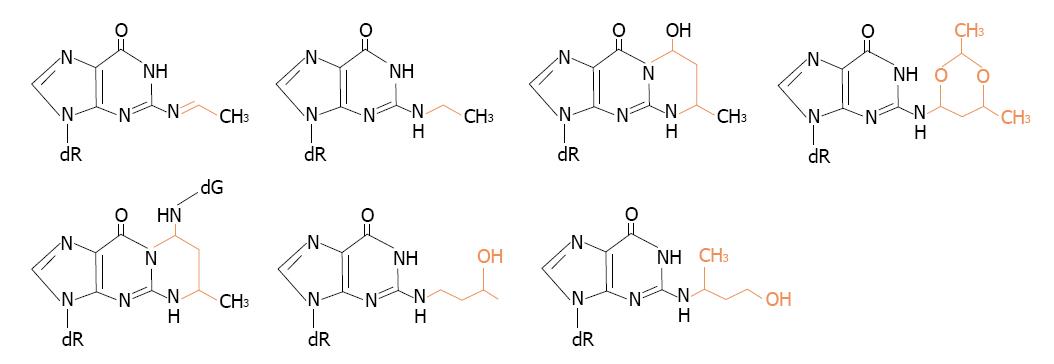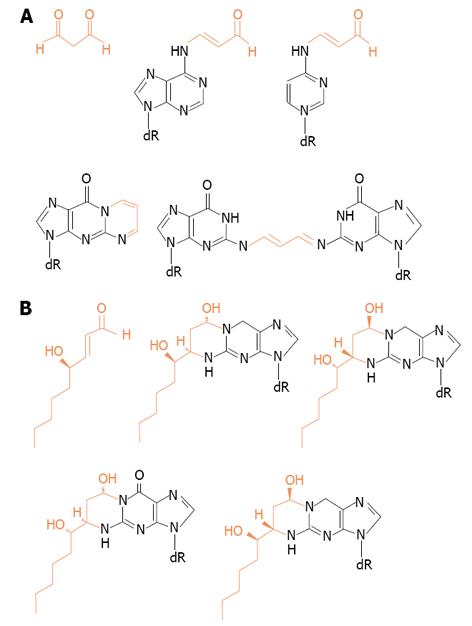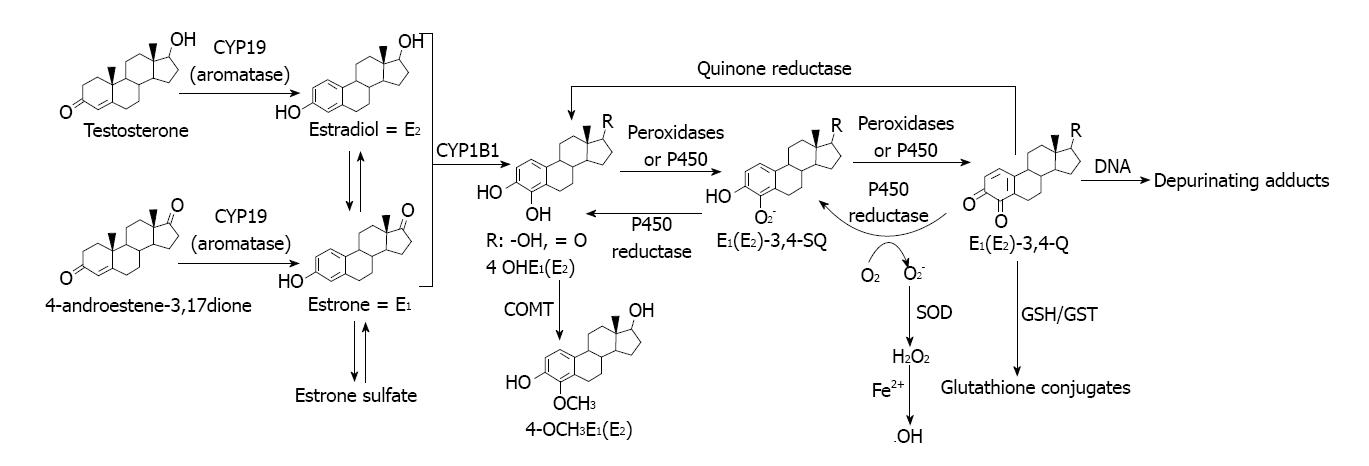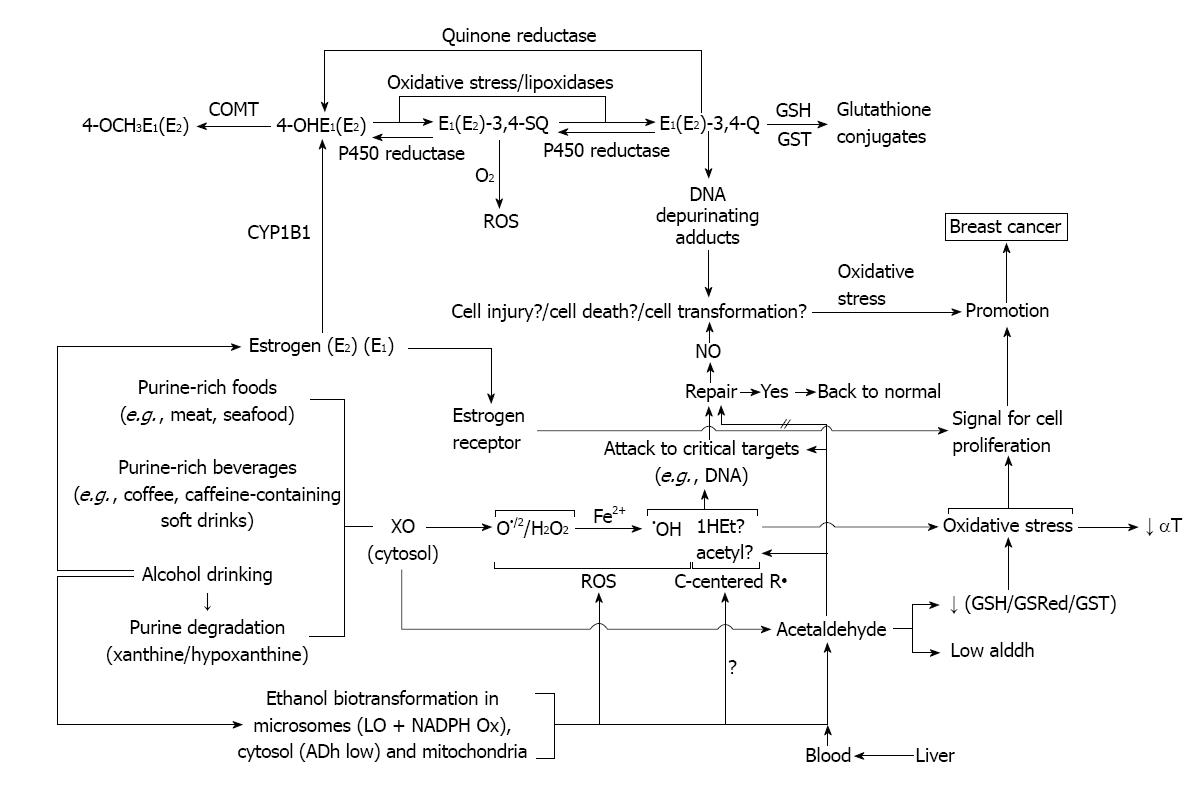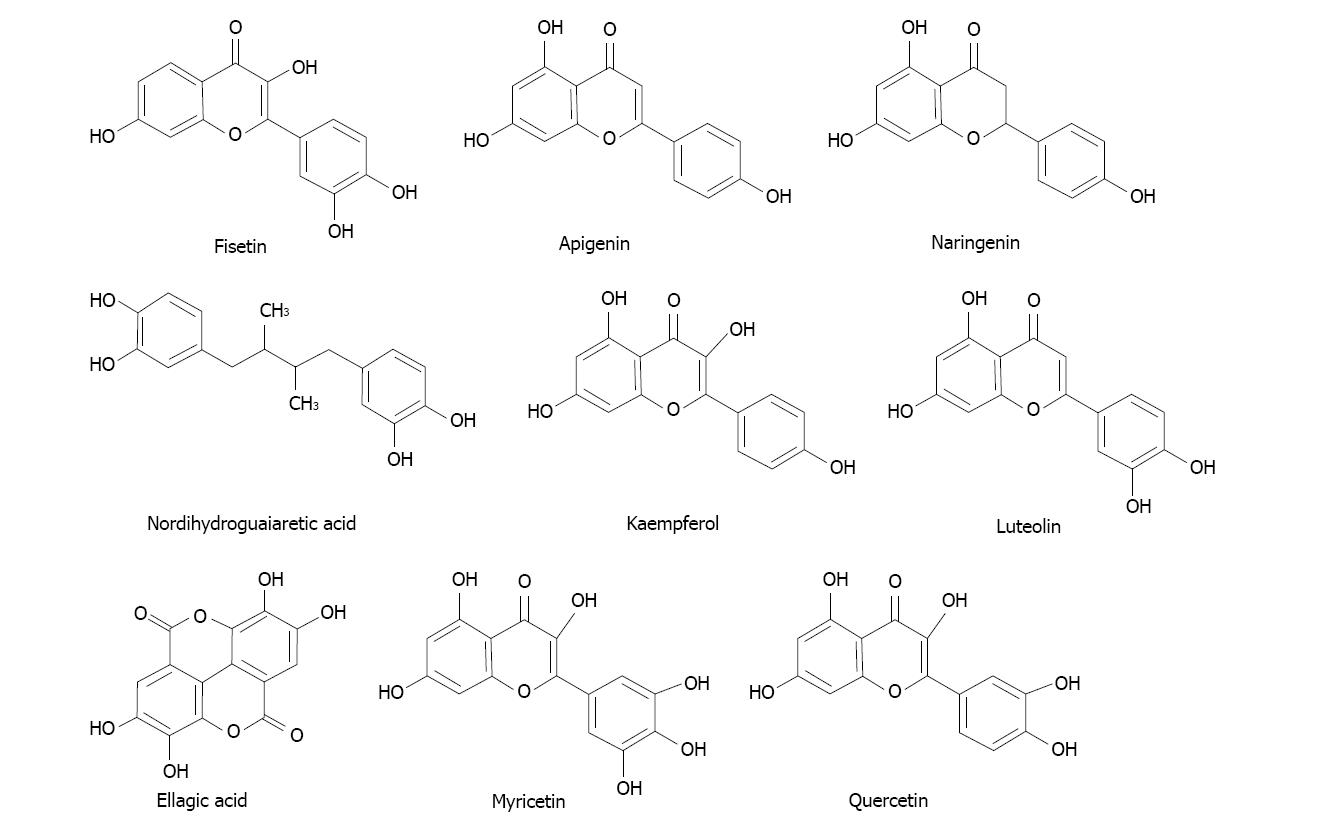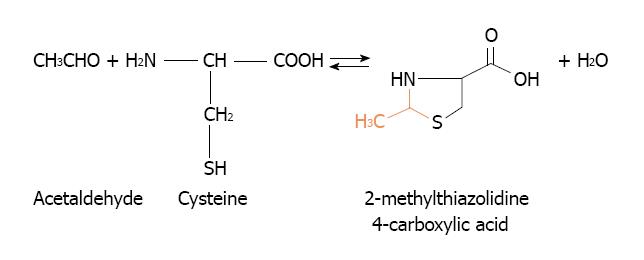Copyright
©2014 Baishideng Publishing Group Inc.
World J Clin Oncol. Oct 10, 2014; 5(4): 713-729
Published online Oct 10, 2014. doi: 10.5306/wjco.v5.i4.713
Published online Oct 10, 2014. doi: 10.5306/wjco.v5.i4.713
Figure 1 Cooperative mechanism between NADPH oxidase and lipoxygenase in the oxidation of ethanol to acetaldehyde in microsomes.
Figure 2 Structures of some of acetaldehyde-guanine adducts.
Figure 3 Structures of adducts formed between DNA bases and (A) malondialdehyde or (B) 4-hydroxy-2-nonenal.
Figure 4 Estrogen oxidation to reactive metabolites that bind to DNA to generate depurinating adducts.
Figure 5 Pathways for catechol-estrogen methylation by carboxymethyl transferase.
Figure 6 Working hypothesis about the mechanism of the promotion of mammary cancer by alcohol drinking.
Figure 7 Structures of some of the compounds with the most powerful ability to inhibit the oxidation of ethanol to acetaldehyde in rat mammary tissue microsomal and cytosolic fractions.
Figure 8 Reaction between acetaldehyde and cysteine to form the adduct 2-methylthiazolidine-4-carboxylic acid.
- Citation: Castro GD, Castro JA. Alcohol drinking and mammary cancer: Pathogenesis and potential dietary preventive alternatives. World J Clin Oncol 2014; 5(4): 713-729
- URL: https://www.wjgnet.com/2218-4333/full/v5/i4/713.htm
- DOI: https://dx.doi.org/10.5306/wjco.v5.i4.713










